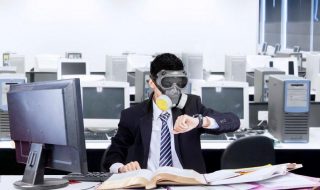
Thermal imaging cameras have revolutionized the way we perceive and interact with our environment. By detecting infrared radiation and converting it into visible images, these advanced devices enable us to see beyond the capabilities of the human eye.
Whether used for industrial inspections, medical diagnostics, or nighttime surveillance, thermal imaging has become an indispensable tool in many fields. This introduction will delve into the many benefits that thermal imaging cameras bring to the table.
Agricultural Monitoring
In the realm of agriculture, thermal imaging cameras are nothing short of a game-changer. Farmers and agronomists use thermal imaging drones to conduct farming operations such as monitoring crop health.
By capturing the thermal signatures of plants, these cameras can reveal subtle temperature differences that indicate water stress, disease, or nutrient deficiencies before they are visible to the naked eye. This early detection allows for prompt and targeted interventions, leading to healthier crops and higher yields.
Detecting Insulation Gaps
Thermal imaging cameras are also invaluable for detecting insulation gaps in buildings. These gaps can lead to significant energy losses, driving up heating and cooling costs. With a thermal imaging camera, you can effortlessly scan your home or office for areas where heat is escaping or creeping in.
The camera vividly highlights temperature differences, making it easy to pinpoint exactly where the insulation needs to be added or repaired. You can walk through your home with a futuristic device that shows you in real-time how to make your living space more comfortable and energy efficient.
Non-Destructive Testing
One of the standout benefits of thermal imaging cameras is their ability to perform non-destructive testing. This means that they can inspect and evaluate the condition of materials and systems without causing any damage.
Imagine being able to diagnose problems within a building’s structure, like hidden leaks or insulation failures, without having to tear down walls or ceilings. With thermal imaging, maintenance teams can quickly identify issues like electrical faults, mechanical wear, or energy losses, ensuring timely interventions and preventing costly repairs.
Firefighting and Rescue
Firefighting and rescue missions demand the ability to see through smoke, darkness, and chaotic environments—a challenge that thermal imaging cameras are specifically equipped to tackle.
Thermal cameras guide rescuers directly to those in need by detecting the heat signatures of individuals trapped in a burning building or hazardous situation, increasing the chances of a successful rescue. Additionally, these cameras help identify hotspots that may reignite, ensuring the fire is completely extinguished.
Wildlife Observation
Thermal imaging cameras have opened up new horizons for wildlife enthusiasts and researchers alike. These cameras can detect the heat signatures of animals, allowing us to see them even in complete darkness.
Whether tracking the movements of elusive predators, studying the behaviors of small mammals, or enjoying the beauty of nature at night, thermal imaging cameras provide a window into a hidden world. They offer an unprecedented opportunity to study wildlife with minimal impact on their environment, promoting conservation efforts and helping us understand the intricate web of life that surrounds us.
The next time you come across a thermal image, remember that you’re not just looking at colors and heat; you’re witnessing the merging of science and magic, turning our everyday reality into something extraordinary.




